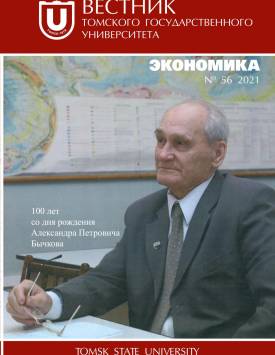A Framework for Assessing Going Concern and Prudence Through the Prism of Risks in the Organization’s Internal and External Control
The research novelty consists in proposing a new approach to assessing the risks of an organization’s activities in terms of the going concern principle and the requirement of prudence. The aim of the article is to propose a mechanism for assessing the components of the internal control system through a matrix of the magnitude of risks. The study allows assessing the going concern and due diligence requirements in the organization’s activities, and to timely identify their impact on the company’s development strategy. The study employed general scientific methods, methods of structural and logical analysis, an expert method for assessing risks. The theoretical and methodological foundations of the study were the works of modern scientists, international and current regulatory documents. The values of the estimated probability of risks to occur, the scale of influence on the financial result and the timing of their manifestation are presented, which allows using them at enterprises different in activities and form of ownership. The results of the study can be used by commercial corporate organizations, non-profit institutions, and public sector organizations in assessing the going concern risks and prudence for a rational approach to assessing income and assets.
Keywords
risk,
going concern,
internal control assessment components,
risk magnitude matrix,
prudence and due diligenceAuthors
| Ali-Askiari Sarvaz A. | Novokurs Center for Continuing Professional Education LLC | arim@inbox.ru |
Всего: 1
References
Аманжолова Б.А. Аудит бухгалтерской (финансовой) отчетности: оценка непрерывности деятельности экономических субъектов. Новосибирск : СибУПК, 2006. 118 с.
Леухина Т.Л. Оценка непрерывности деятельности в теории и практике развития организации. Йошкар-Ола : МарГТУ, 2011. 147 с.
Жминько С.И., Бакланова П.В. Методика аудита непрерывности деятельности организаций. Краснодар : КубГАУ, 2013. 179 с.
Бутусов Е.В. Риск-ориентированный подход к оценке и внутреннему контролю непрерывности деятельности организации. Уфа : УГНТУ, 2014. 134 с.
Приказ Минфина России от 28.12.2015 № 217н «Международный стандарт финансовой отчетности (IAS) 1 “Представление финансовой отчетности”».
Приказ Минфина России от 09.01.2019 № 2н «Международный стандарт аудита 570 (пересмотренный) “Непрерывность деятельности”».
Информация Минфина России № ПЗ-11/2013 «Организация и осуществление экономическим субъектом внутреннего контроля совершаемых фактов хозяйственной жизни, ведения бухгалтерского учета и составления бухгалтерской (финансовой) отчетности».
Приказ ФНС России от 16.06.2017 № ММВ-7-15/509@ «Об утверждении Требований к организации системы внутреннего контроля».
Али-Аскяри С.А. Методика риск-ориентированного аудита. Новосибирск, 2020. 192 с.
Сервис предоставления сведений из реестра ЕГРЮЛ/ЕГРИП. URL: http://egrul.nalog.ru
Сведения о юридических лицах, имеющих задолженность по уплате налогов и / или не представляющих налоговую отчетность более года. URL: https://service.nalog.ru/zd.do
Информирование банков о состоянии обработки электронных документов. URL: https://service.nalog.ru/bi.do#result.
Прозрачный бизнес. URL: https://pb.nalog.ru
Единый реестр субъектов малого и среднего предпринимательства. URL: https://rmsp.nalog.ru
Сайт ФНС. URL: https://service.nalog.ru/pau.do
За честный бизнес. URL: http://zachestnyibiznes.ru
Вестник государственной регистрации. URL: https://www.vestnik-gosreg.ru
Банк данных исполнительных производств: ФСПП России. URL: https://fssp.gov.ru/iss/ip
Электронное правосудие. URL: http://kad.arbitr.ru
Федеральный закон от 06.12.2011 № 402-ФЗ «О бухгалтерском учете».
Кодекс Российской Федерации об административных правонарушениях № 195-ФЗ от 30.12.2001.
Налоговый кодекс Российской Федерации (часть вторая) № 117-ФЗ от 05.08.2000.
Приказ Минфина России от 31.12.2016 № 260н «Представление бухгалтерской (финансовой) отчетности / ФСБУ».
Приказ Минфина России от 30.05.2018 № 124н «Резервы. Раскрытие информации об условных обязательствах и условных активах».

